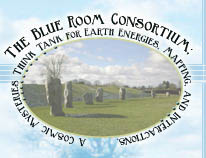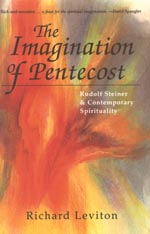

Books and Free Excerpts |
|

Steiner walked the hill, examinied the landscape around Dornach, even looked into the subterranean grottos in Arlesheim at the base of Dornach Hill. During his walk, Steiner contemplated the "peculiar spiritual cloudlike formation which we may designate as the etheric aura" at Dornach. He knew that "a kind of etheric aura towers up" over every topographical area on the planet. Later he spoke of "the special etheric sheath which had surrounded the ancient true Mystery Centers" and that was present at Dornach from its beginning. Dornach Hill had "Mystery secrets" which Steiner planned to articulate through the Goetheanum as a living building dedicated to speech. Steiner's first visit to Dornach Hill left him inexplicably gloomy; afterwards, Marie von Sievers speculated that Steiner very likely had foreseen the eventual destruction of the first Goetheanum by fire. After the Munich authorities refused him permission to build, Steiner returned to Dornach in May 1913 and accepted Dr. Grossheintz' gift of Dornach Hill. Four months later at the autumnal equinox, Steiner laid the first Foundation Stone for the Geotheanum on the site, certain that in Dornach "a central point for spiritual knowledge will be created." Present at Dornach Hill, even today, is a subtle feature that makes it entirely possible to make the site a central point for spiritual knowledge. Sitting supersensibly at Dornach Hill like a lustrous jewel in its setting is an emerald in a landscape zodiac. This is a geomantic expression of the positioning of the emerald within the human organization. We know from life science disciplines like anatomy, Chinese acupuncture, and Tantric yoga that the human body, both materially and energetically, is stunningly complex. The same is true forthe planet when we consider its subtle consciousness-energy matrix, or etheric geography. One feature that facilitates higher consciousness functions in humanity through the planetary web is called a landscape zodiac. This is a large supersensible star imprint, an etheric template of the constellations of the zodiac existing as a living formative force overlighting a variable portion of the landscape. Each landscape zodiac is an initiatory supersensible temple with an energy anatomy equivalent to the human chakras. There are about 500 landscape zodiacs around the world varying in size from less than a mile to over one hundred miles in diameter. One of the best known of such geomantic features is located at Glastonbury, in Somerset, England. Known generally as the Glastonbury (or Avalon) Temple of the Stars, this geomantic feature, which is about twenty miles in diameter, is exoterically described as a recapitulation in landscape topography of the standard morphological features of the signs of the zodiac. Those who have written about this mythologically based landscape zodiac suggest its origin might date back to the Chaldean epoch, some five thousand years ago at least; others argue for an Atlantean origin. The suggestion is also made that King Arthur's Knights of the Holy Grail used the etheric zodiacal temple as a basis for their inner questing, as the Round Table. "The Round Table, laid out in the form of a zodiac over the country around the [Glastonbury] Tor, was the conceptual creation of a civilization which appears to have risen some 4000 years ago, at the beginning of the age of Aries," remarks noted geomantic scholar John Michell. "Its religion was based on a solar myth within the twelve-part framework of the zodiac, and the leader of its twelve ruling gods was a British version of Apollo, namely Arthur." The landscape zodiac is all about myths in the landscape, or what one commentator calls geomythics. "Imaginative Symbolism was physically writ large across the geomantic terrain of Avalon's Holy Ground. Everything is really symbolically physical and physically symbolic. It is also an excellent description of the Glastonbury Zodiac; those vast nature/star effigies that dreamingly spin on the Round Table of earth, the rich, seminal emanations of the Living Thoughts of God." For another Glastonbury exegist, the Somerset star temple is "Merlin's Atlantean Temple of Initiation, a Great Synchronicity Machine." The zodiac is "a Grand Ideal latent in the Somerset landscape," keyed to the spiritual-magical unfoldment of human consciousness and based on the Qabala. "Each star temple within the Somerset zodiac represents a progressive stage of initiation," such that formerly men and women purposefully transited the starry landscape as part of a cycle of initiations. In other words, the landscape zodiac represents a large etheric Mystery center coordinated with the spiritual intelligences of the cosmos. From my own investigations, I can report the impression that the landscape zodiac represents an interactive, experiential, miniaturized virtual image of the principal stars and constellations of the galaxy; underlying this image is the form and consciousness of the Human, the Holy Ghost. The zodiac exists to provide the revelation of this face of the Human as a direct inner initiatory experience. We might reinvoke the Gnostic example of Sophia casting the image of the "immortal man of light" or "Adam of Light" on the waters (the etheric element) for the humbling of the arrogant Ialdabaoth. This Sophianic image is the composite face of the zodiac as templated on the landscape through its etheric body. We gain a deeper sense of the experience of such an etheric temple by considering the way Steiner described the quality of the ancient Indian etheric clairvoyance. At that time, the initiate rose out of his physical body into his etheric body, and from there "he looked all around him at the cosmic totality of the thought of the gods, whence the world sprang forth." The initiate wove around himself an etheric, cosmic net out of the thoughts of the gods; to him, this world-web of thought was like a "soul-light" pervading the world. The initiate perceived "soul-light pervaded by spiritual wisdom" in which everything was written in living prototype, "entirely woven of and irradiated by the soul of the light, truth and knowledge poured." With this preliminary sense of the complexity of etheric geography, we discover that Dornach Hill and environs sit at the center of a landscape zodiac about 14 miles wide. This zodiac has a planetary context which we can suggest by referring again to the twelve-sided dodecahedron. Plato left a hint for us in his Timaeus when he described the Earth, when seen "from above," as being like a leather ball sewn in twelve equal sections: in other words, a dodecahedron. It is a geometric fact that each face of a dodecahedron is a pentagon, which is a five-sided figure. If we visualize a twelve-sided dodecahedron as a form made of light superimposed over the physical Earth, then the planet's surface is divided into twelve domains, each of which is contained by a pentagon. As such, we might term each topographical pentagon a pentagonal face. Each pentagonal face is subject to a specific astrological influence; just as with the twelve principal signs in the traditional zodiac, one sign influences each pentagonal face for a long period of time. The Dornach zodiac, or star template, resides within one aspect of the dodecahedral planet web, one pentagonal face, over which the living etheric energy of Aquarius is active. Aquarius, astrologically, is the "quality of time" of the coming era, literally the New Age about which so much has been said. At the center of the Dornach zodiac temple and occupying the energetic position of the heart within the heart chakra of its energy configuration, sits the supersensible emerald. Aquarian energy is also entirely in accord with the requirements of the elaboration of the consciousness soul. Aquarius encourages the development of strongly individuated, spiritually independent men and women capable of working collegially in a common spiritual project. Aquarian energy is decidedly Michaelic. The multinational consortium of builders who cooperated in the wartime construction of the Goetheanum is an excellent example…. Steiner's act of spiritual mentorship illumined the landscape zodiac with the new Aquarian energy of our day. In his Foundation Stone Meditation, delivered on January 13, 1924, Steiner exhorted his fellow Anthroposophists to "truly live " in "the All-World-Being of Man." The spiritual force of his Mediation was itself a sufficient inducement for many to supersensibly engage another part of their awareness in the "All-World-Being of Man." The fact that they were situated at the heart center of a holographic representation of this "All-World-Being of Man" made their spiritual efforts that week that much more significant. As we appreciate that the Christmas Meeting virtually took place within the emerald heart of Lucifer, the Light-Bearer of humanity, situated at Dornach within a complex supersensible etheric geography, we can see that through his invocations Steiner ushered many across the threshold into the presence of the Grail.
|
Newsletter (Back Issues) | Articles | Primers | About Blue Room | Projects and Research | Workshops and Field Trips | Trainings and Consultations
About the Ofanim | About the Founder-Director | Information for Investors | Links | Contact the Consortium
 The Imagination of Pentecost: Rudolf Steiner and Contemporary Spirituality (Hudson NY: Anthroposophic Press, 1994). Footnotes deleted.
The Imagination of Pentecost: Rudolf Steiner and Contemporary Spirituality (Hudson NY: Anthroposophic Press, 1994). Footnotes deleted.